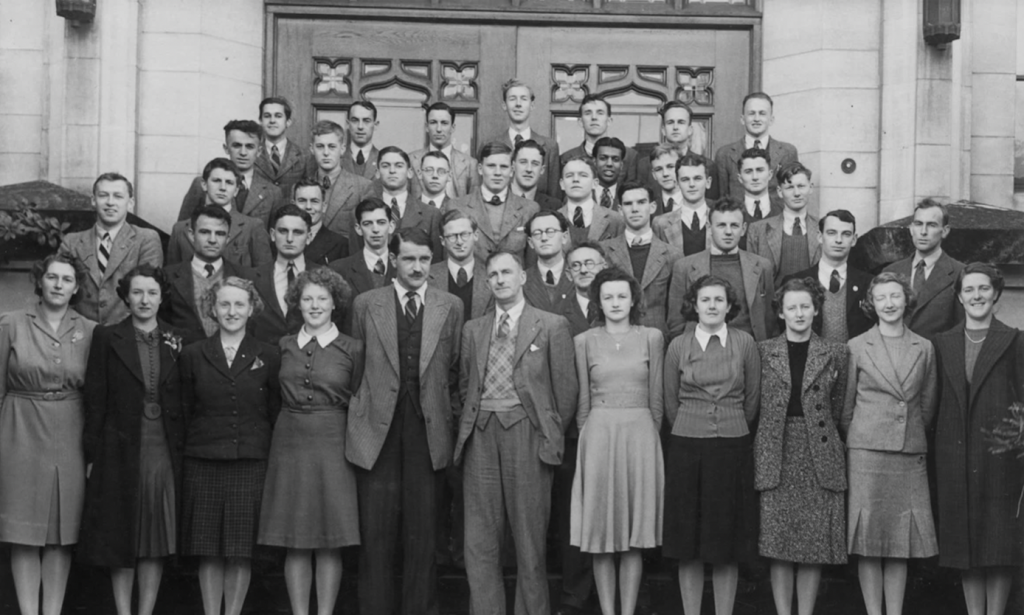Elizabeth Cox’s book Making Space – A History of New Zealand Women in Architecture is a treasure trove of information, that I suspect will take me several weeks to fully read and digest. The book is a fantastic achievement, spanning the last century and a half, with a number of guest chapters by other great women architect authors, focusing on the amazingly large number of women that are out there practicing architecture. The story starts slowly, to be sure, with each chapter centred around a single woman at a time, but gradually more and more women join in to the battle to be architects and to practice in what has often been a very male dominated atmosphere. By the end of the book there are so many women being mentioned and coming through the system, that you might be forgiven for thinking that the battle is over, but of course we all know that this sort of change takes not just years, but generations.
I’m impressed as anything by the sheer scale of this ambitious project, as well as by the finished project. One day I might get around to writing a book, but this tome is both an inspiration and also awe-inspiring for the amount of references and quality of information contained within. Cox, it seems, certainly knows how to write and undertake research.

It’s a nicely produced book as well, mostly black, white and red, but actually full colour for many pages. Produced by Nicola Leggat at Massey University Press, who seems to be the Go-To person for getting book projects actually done, the book is divided into three large chunks – or historic phases. The first goes from early architectural history in New Zealand (1840-1945), the middle chapters occupy the post-war years from 1945-2000, and the final major parts of the book deal with the last 20 years. Reassuringly, there has been a lot of improvement in the last 20 years, and the last third of the book is where most of the women are featured. I’ve got to say right here that it would have been better to have had a woman write this review, but there are no women here at the Fish any longer (and of course, maybe the Fish should be left to just die, flapping listlessly on the foreshore), but also I should note that having only just purchased the book, I haven’t been able to fully read the book yet. But I have skimmed every one of the 48 chapters the book contains, searching for names of women architects that I know – and I know quite a few. I’m really pleased to say that almost every successful woman NZ architect is featured here in the book, even if it is only just a line or two.
The book is encyclopaedic in its scope, as is evidenced by a full 11 pages of triple columned, tightly packed, intensely detailed, index of names at the end of the book. At a very rough guess, that is somewhere between 1200-1500 names – perhaps the drought really has broken. Friends tell me that the Schools of Architecture these days have a 50/50 male/female intake, although as Gill Mathewson’s investigations from a decade ago show, these things take a while to filter through to women becoming Directors in practices. Of course, as the song goes, Sisters are doing it for Themselves these days, by forming their own practices, and not waiting for years on the sideline for the promotion that never comes (happens to all of us, myself included, but undoubtedly happens more to women).
The other song we all want to thank Cyndi Lauper for, is that Girls just wanna have Fun, but that is sadly a little missing here. At 447 pages long, this book is long enough already, but I really wish that there could have been a chance to get to know more of the women in the book in more detail. Some are luckier than others, especially if they get to author a chapter themselves (if I haven’t mentioned already, all the chapter authors are by women), so the irrepressible Sally Ogle of Patchwork Architects can describe in rich detail the origin of their practice with the tale of Building the DogBox, the industrious Jessica Halliday dissects the Christchurch rebuild in her Forming the Future chapter, and the wonderful Lynda Simmons writes on Collective Action since the 1990s. While there are a few who may have written more than one chapter, most authors have written just a single chapter each, but of course the lead author, Elizabeth Cox, has written the most, with (at my count) 15 chapters, all impeccably researched and referenced. I’m surprised at how many interactions there are with my own architectural history, small as it is, with names popping up in the conversation along the way. Baigent? De Lisle? Wong? Dodd? Perhaps being an architect really is something that can run in the family? The classic case of this instance is the Reynolds clan from Auckland, with mothers, fathers, sons and daughters all being wound up in some way in this profession.
Time for me to shut up now and get back to actually reading the book, and debating the future of this blog. My recommendation to you all is to get out there and get a copy – it would be nice for Elizabeth Cox to get something in the way of recompense for her years of hard work. At $65 it is a remarkably good book to have besides your bed, to dip into and absorb. Happy reading.





Author interview with Ryan on NatRadio Nine to Noon here
https://www.rnz.co.nz/national/programmes/ninetonoon/audio/2018863625/women-in-architecture-in-nz-across-the-ages
Some more pics at link
Thank you Mr 60. How are things with you? Have you got your copy yet?
All good, just finished a creche in Otaki – I have seen how many businesses are moving into that area as land is cheaper and plenty of people no longer measure distance in kms but more like the statesiders do in time travelled
Transmission Gully has spread the affordability for both houses and commercial right up the coast, some would say smeared like a marmalade stain..
I think that even if we went full electric cars we would need a second route out of Wgtn in case of earthquake so TG isn’t such a bad idea in my book
I once heard a rumour that there was a plan to use the Interislander ferries as floating generators to plug into the local Wgtn grid in case of being cut off in an EQ but I’ve never been able to confirm it – perhaps one of your smart readers may have some inside gen?
As far as large nz books go I’ll be giving Mrs 60 this for her next present which is much more bourgouis I’m afraid
https://masseypress.ac.nz/books/rooms/
Otherwise just the usual, enjoying the country life hearing ruru every night as i nod off to sleep and bellbirds in the afternoon – all that rat trapping is paying off
And looking forward to any fresh fish perspectives – each time I look at the site and see a new article I get a wee shot of joy so thank you Nemo
“each time I look at the site and see a new article I get a wee shot of joy so thank you ” – nicest thing anyone has ever said to a Fish… thanks !
Is it true that TG has made a big difference in people driving home to Kapiti after a long hard day in the city? But that it makes bugger all difference coming the other way in the morning, on the way into work, cos you still get caught up at J’Ville?
I went back to the coast road on the northward trip last week – just to see the sunset beyond Kapiti rather than a cliff of sprayed concrete. As far as I can tell TG saves nothing on the clock or the oddometer in my non-commuter hour trips, but I wouldn’t be surprised if those long hill slogs sucked up more gas.
Starkive – you’ve been around a while – did you do an architecture degree? How was it when you were at Uni? Lot’s of women around doing degrees, or was it still a fairly blokey profession then?
I caught a glancing blow from Auckland School of Architecture in the late 70s as a (theoretically) mature student. Persuaded that the trippy methods of Brick Studio were for me, I signed on. Within a week or two I balked at the blindfold clay modelling and broke during the non-verbal spatial exploration encounter group. When I asked how long before we got to, you know, design a building I was solemnly told it would be two more years. I got my deposit back.
There were certainly women present – though still in marginal numbers. I can remember Lucy Treep, Julie Stout and Felicity Wallace, but overwhelmingly it was a place for boisterous blokes fresh out of high school maths and physics classes. I can see how they might have benefited from a bit of encounter groping.